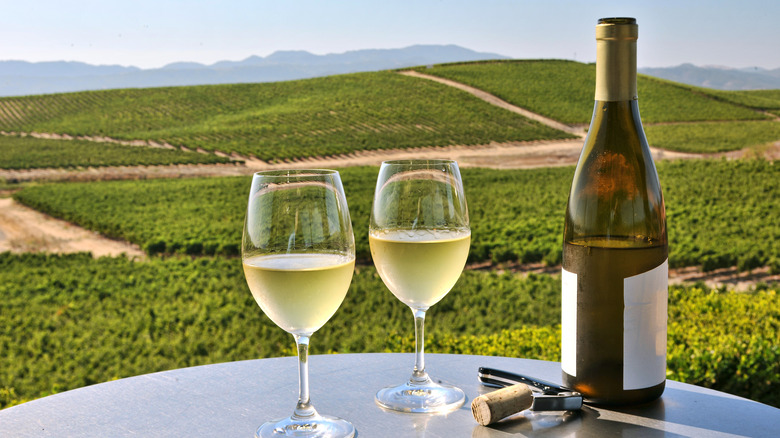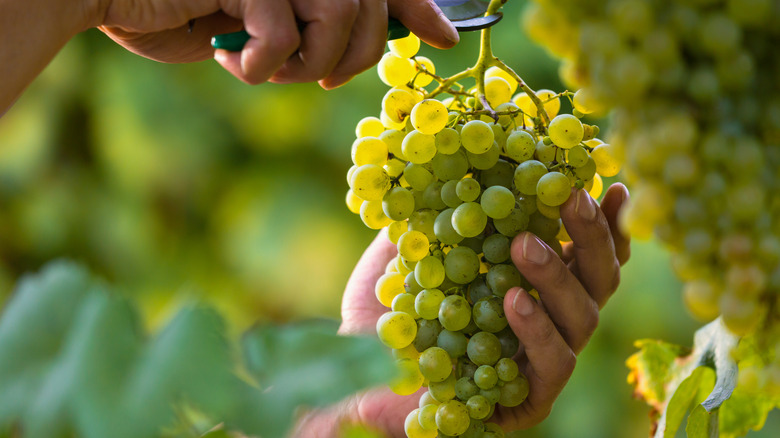A Big Change Is Coming To Napa's Stony Hill
Built in 1951 by Fred and Eleanor McCrea, Stony Hill Vineyard, located in California's Napa Valley, is synonymous with white wine — and Chardonnay in particular. But changes are afoot for the legendary wine producer, which, per The New York Times, came under new ownership in December 2020.
Led by winemaker Jaimee Motley, the historic vineyard has already begun to embrace new practices, reported The Times. For example, Stony Hill is in the process of replanting much of its vineyard, rebuilding its cellar, and implementing biodynamic and regenerative practices that promote soil health.
However, the biggest change coming to Stony Hill is the wine itself: Despite its legacy as a white wine producer, once the replanting is completed, the vineyard will begin producing a majority of red wines. Per The Times, Stony Hill's replanted vineyard will feature 14 acres of cabernet sauvignon, a red wine grape varietal, compared to only 8.5 acres of chardonnay. Additionally, Stony Hill will have 5 acres dedicated to cabernet franc, a black grape varietal also used to produce red wine.
Why is Stony Hill shifting to red wine production?
Ultimately, Stony Hill's shift towards red wine is motivated by the effect of climate change on grape cultivation, explained the The New York Times. "Transitioning to cabernet just makes sense with climate change," explained Motley to the publication.
Specifically, cabernet can handle hotter climate conditions better than white wines like chardonnay, reported The Times. As a result, it is better suited to California's drought conditions. That being said, Stony Hill will continue to grow chardonnay in areas of the properties with cooler temperatures.
The conversation surrounding wine and climate change has become increasingly urgent in recent years, as rising temperatures and changing weather patterns can have significant effects on grape cultivation. According to Wine Enthusiast, a warmer climate may improve wine production in areas like Germany and England, which are known for their cooler temperatures. However, for many historic wine-producing regions in Italy, California, and Australia, hotter temperatures pose a threat and can cause grapes to shrivel, sunburn, and dry out.

